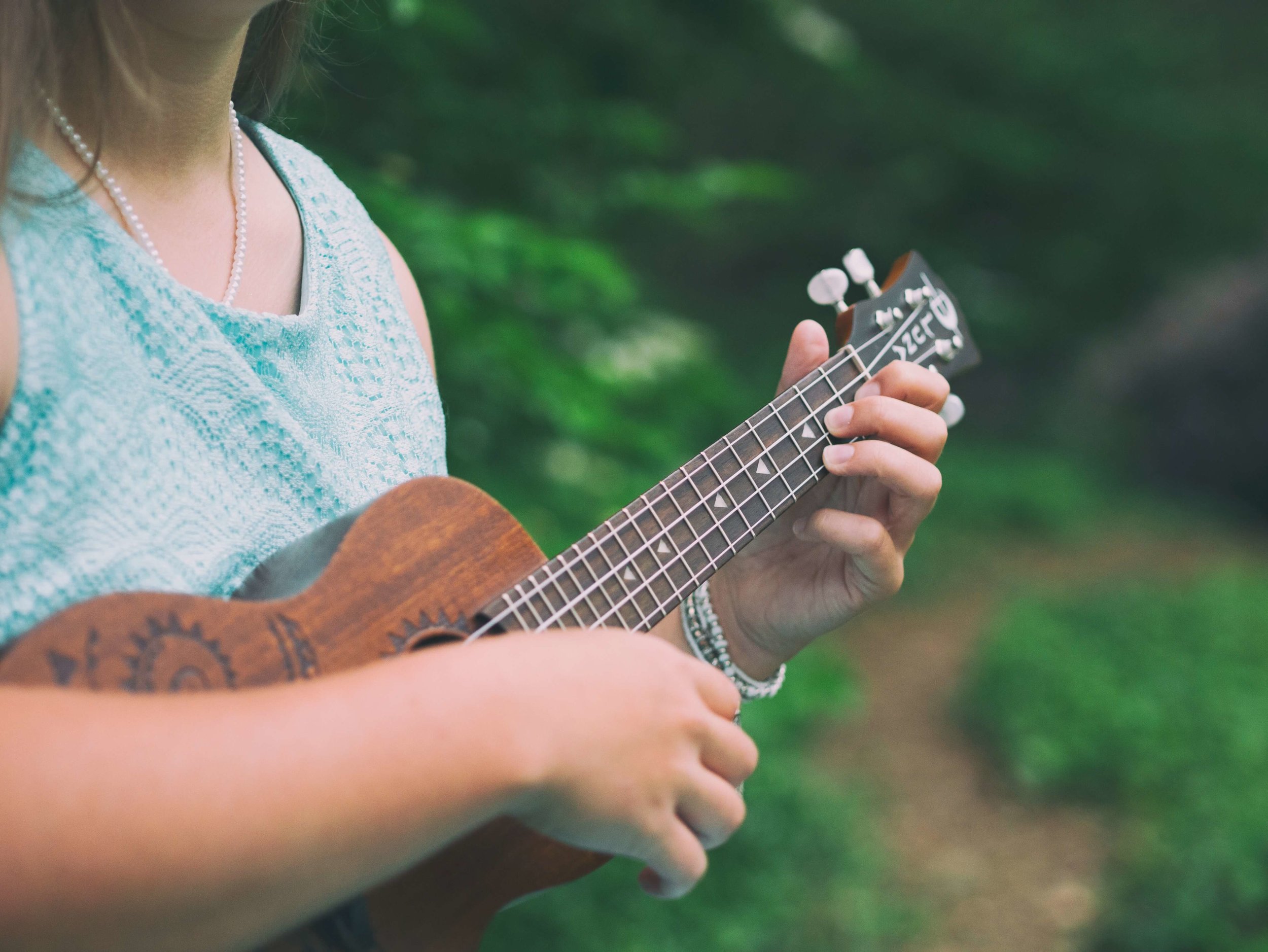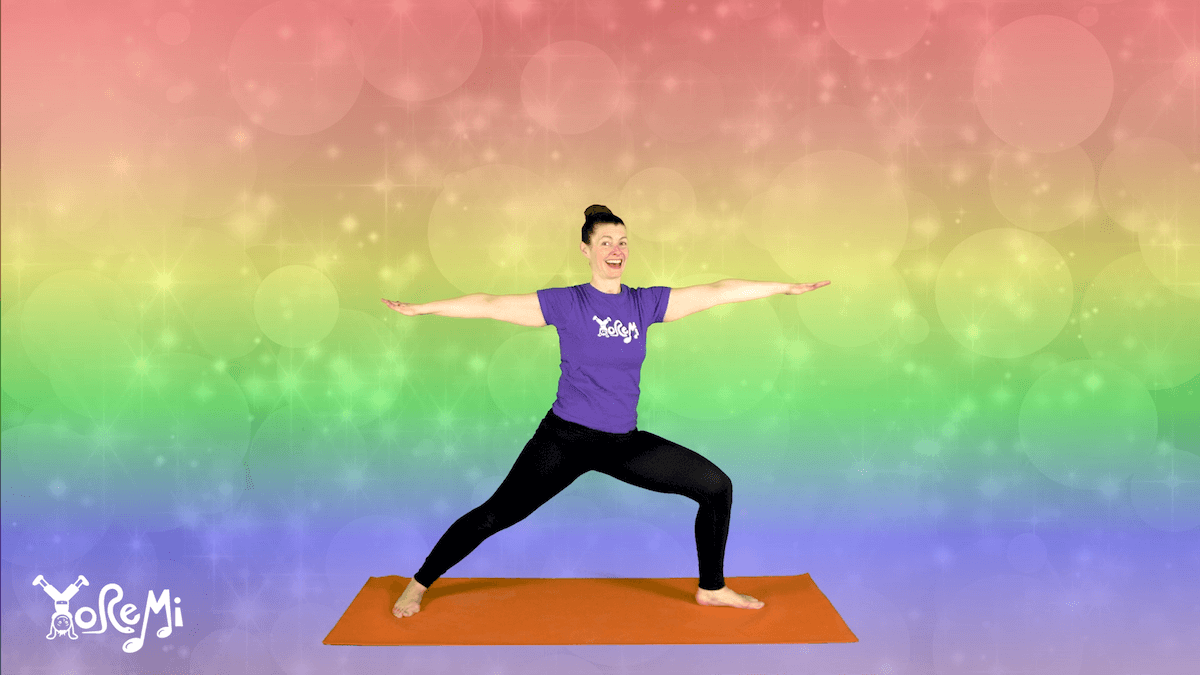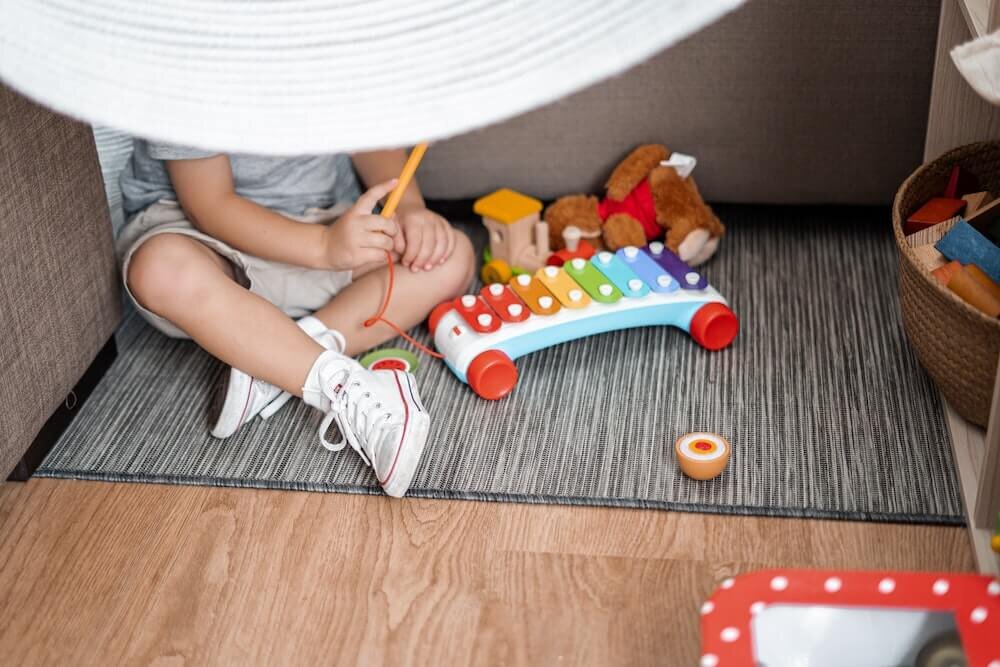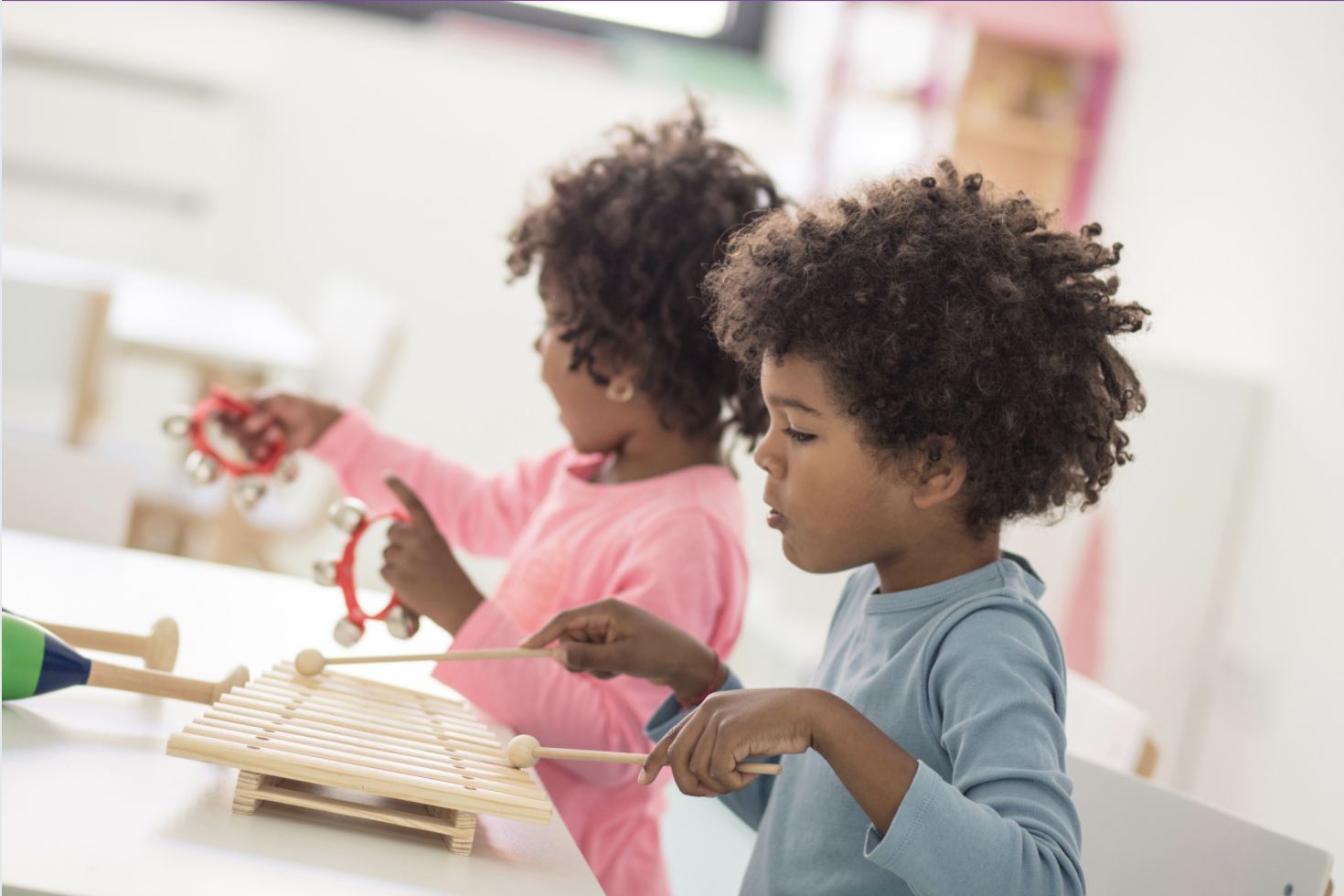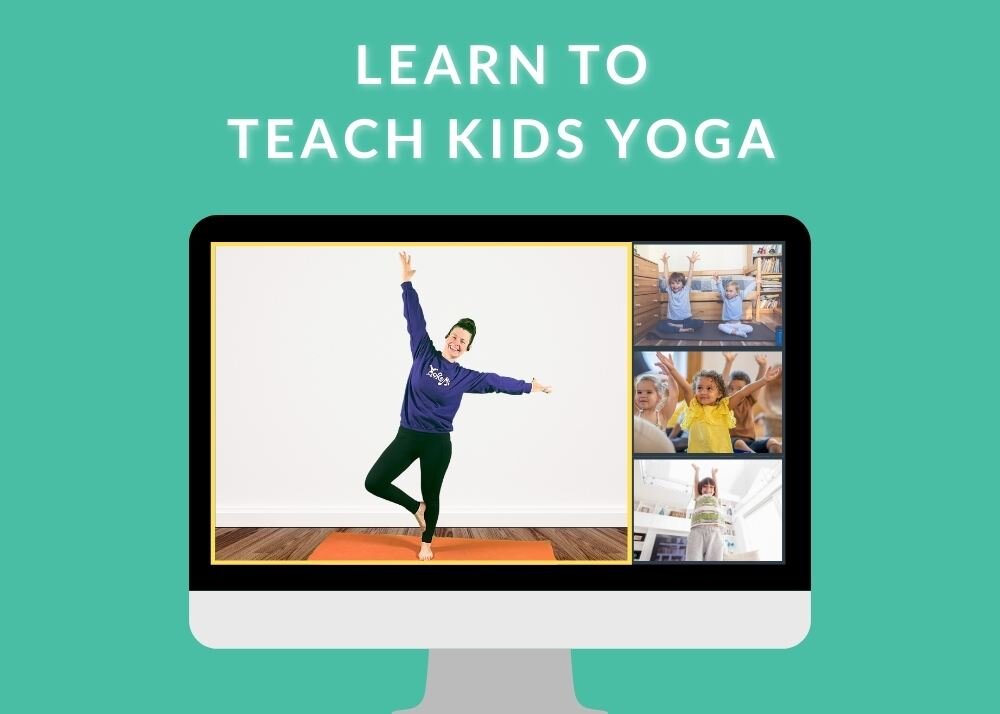How Music Influences Child Development (Plus Our Favorite Music for Young Children)
/When my 18-month old was crying in the car, 20 minutes down the highway from Grandma's house, we did the only thing we knew would work to get us there without a stop.
We played his favorite song, "Ring of Fire" by Johnny Cash, on a continuous loop. After the sixth repeat, we pulled up at Grandma's house. Crisis averted.
And while it would never get me nominated for Parent of the Year, there are many versions of this story. The toddler who asks for Biggie. The infant who hates folk music at dinner but gobbles up peas to punk rock. The child who will only sleep through the night if Elizabeth Mitchell's soothing lullabies are played at bedtime.
Why do babies respond to music? We mentioned in our blog post about classroom sound design that sound waves have powerful impact on plants. And we don't exactly know why. While it may not be a perfect parallel - music influences child development in several clear ways.
How does music influence child development?
1. Music is language.
Music acts as a child's first language. Before they have words, they babble and cry and sing. (As parents and caretakers of infants, so do we!) It's the clearest form of expression they have.
Exposure to music increases a child's vocabulary of sound qualities, all while absorbing information about pitch, rhythm and volume. Both by listening to recorded music and by having live singing in the home (the latter is of course more visceral and personal), babies gain important information about how to communicate, and what is happening in their world.
Try this: sing a simple song.
Choose your favorites, take cues from Kids Songs With Dan or get Cathy and Marcy's terrific "Sing To Your Baby" and find one or two songs which you feel comfortable singing.
Sing them with words and just on "la."
Sing them at mealtimes, bed time, bath time, at the start of school or at dismissal.
As your comfort with singing at home grows, find new songs for new occasions - "Splish Splash" for bath time, or "I'm Gonna Be (500 miles)" for a stroll around town.
Make up a simple song with your baby's name in it, like: "Robin, Robin, carrots and peas, Robin Robin, bread and cheese." Or in a classroom, make a simple rhyme for a classroom song: "We are the Blue Jays flying high, soaring up into the sky!" Or "We are Room 310! We are friends! If you forget we'll tell you again!"
Don't overburden yourself - keep things simple, fun, and short. When you get tired of something, change it.
2. Sensory exploration
Music is hearing. Early exposure to music fires up the brain.
Whether you know the science behind it or not, you know that music engages humans. It wouldn't exist if it didn't. There are many indicators that early exposure to music is a springboard to sensory awareness and the increase in vestibular and proprioceptive senses.
Music is often tied to movement - think "The Itsy Bitsy Spider" or "Put a Ring On It." Any increase in musical exposure is also going to increase children's kinesthetic experience.
Infants see clapping, see dancing, and take visual cues. Sound, touch, movement and sight are the senses that we can help develop from the earliest stages.
Try this: these three videos incorporate music and movement activities to promote early child development.
3. Eye Strengthening
Music is physical. Children follow sound with their eyes. Automatically. If you talk to your baby (or students) as you walk around a room, they will follow you. So, when we engage sound in our classes, we are often engaging the eyes.
The American Optometric Association suggests that early support for eye strength can lead to sustained eye health in later years.
In Yo Re Mi classes, many of our activities allow infants and children to follow our hand and body movements. We also use props like a breathing ball for eye tracking, which is a cross-brain activity which may support literacy.
Try this: music activities for eye strengthening
4. Emotional Vocabulary
Music. Is. Feelings. Someone said that, as words are made up of vowels and consonants, vowels carry the emotions and consonants carry the thought.
What happens when we sing? We elongate the vowels. (ex: "You are my sunshiiiiine, my only sunshiiiiiiine. / You make me happyyyyyyyy when skies are graaaaay.)
But different music has different emotional qualities. Exposure to many different styles of music can help young children identify different parts of the emotional spectrum.
Try this: Play different music and see how it affects you. What emotions do you hear?
5. Intrinsic knowledge of musical elements.
Children who grow up speaking two different languages know nothing else. They understand mesa, and table, the sameness and differentness of them. Since they learn it so young, it's automatic - they don't have to think about it.
Émile Jaques-Dalcroze (who inspired much of Yo Re Mi's approach to combining music and movement) witnessed children in the 1800's who were musical prodigies. They could play every note of a difficult piano piece. But they did not know how to FEEL the music.
He proposed a new term, Eurythmics, and developed a series of physical exercises which help learners understand music in a physical way - not through high level analysis, but through walking, turning, jumping, and spontaneous movement.
Dalcroze Eurythmics is a correction for students who have learned to be overly analytical. But as this is a learned behavior - what if infants learned about the music elements - tone, pitch, rhythm, volume - just the way they would learn a second language? They would simply know them.
Children exposed to music at a very early age have an increased facility with musical elements, not to mention mathematics, spatial relationship and logical reasoning.
Try This: Musical Elements
Songs like Mama's Sleeping exposes children to volume and rhythm; Slide Whistle exposes children to pitch; and Toomba-ee Lero by Ella Jenkins is a terrific rhythm piece!
6. It's fun
All this science and supposition ignores a major point: music is a joyful way to come together.
"The more we sing together, the happier we'll be."
"Music makes the people come together."
"I like to move it, move it!"
There is no end to the joy that music can bring. Children's social-emotional development hinges on interaction - and there is no greater celebration of community than singing songs together. We feel it down to our toes, send the sounds ringing high into the air for all to hear, and let our feet collectively stomp our history right into the ground.
Look around. Music is everywhere because we love it, and it's good for us. Sing to your babies!!
Save this post for later!



